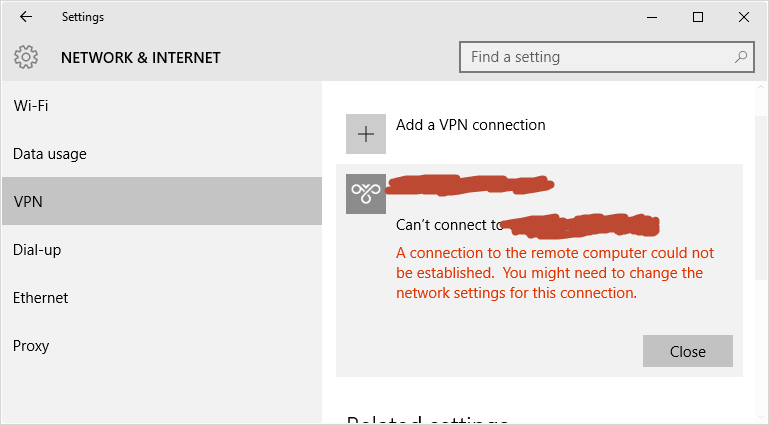

- VPN AUTOCONNECT WINDOWS 10 HOW TO
- VPN AUTOCONNECT WINDOWS 10 INSTALL
- VPN AUTOCONNECT WINDOWS 10 DRIVER
To add an specific route through the VPN Server: push "route 192.168.1.0 255.255.255.0" To configure the VPN server as the default gateway: push "redirect-gateway def1 bypass-dhcp" Then you can add the following lines in the VPN server configuration file to add routes on clients when they connect: Roues in Windows are stored under the following registry key: HKEY_LOCAL_MACHINE\SYSTEM\CurrentControlSet\Services\Tcpip\Parameters\PersistentRoutesĪt this point a disconnected client only has access to the VPN server.

Set a persistent static route to the VPN server on Windows clients using the following command (-P makes it persistent): route -P add mask metric if If you want to avoid a poweruser to be able to get to the Internet you need a firewall in your gateway to avoid so, or strong group policies to avoid privilege scalation.įor a normal user, you can configure the Windows client machine without a default gateway. The only way I can figure out if through Windows Firewall, and I'm not an expert on that subject.
VPN AUTOCONNECT WINDOWS 10 HOW TO
I don’t know how to avoid the user to connect to the Internet before the VPN is set. (For all users, %ProgramData%\Microsoft\Windows\Start Menu\Programs\Startup or for the current user only, %APPDATA%\Microsoft\Windows\Start Menu\Programs\Startup.) To get that to run when you log in, place such a shortcut in the usual startup folder.

If using a service is not an option, you can pass extra command line arguments to the OpenVPN GUI invocation to make it automatically connect on startup (as well as showing the tray icon as usual): openvpn-gui.exe -connect myprofile.ovpn In those cases, I decided not to use services at all: In those situations, if I wanted OpenVPN GUI to show them a beautifull list of available connections, it meant that the service saw those files and was trying to connect to them automatically. I've had some issues in the past with people who needed to have a VPN server as a service plus several vpn client files in the same machine that only connect every now and then. You may want to investigate is there's a way to elaborate a whitelist to force the service to connect only to specific files, and not all.

VPN AUTOCONNECT WINDOWS 10 DRIVER
OpenVPN is a ported program, and windows driver subsystem has allways been a pain in the a**. HAving two configurations that you can SEPARATEDLY test succesfully, doesn't mean they'll run together, as they may be competing for the same interface. In Linux this is trivial, but in windows it may be problematic. Added after reading some comments: You need one interface per connection. In windows, I strongly advise to permanently associate an interface with their connection using the configuration files:ĭev-node TAP_Serv forces OpenVPN to bind the connection to the network interface named "Tap_Serv". Keep in mind in most situations you need one TUN/TAP interface per connection file.
VPN AUTOCONNECT WINDOWS 10 INSTALL


 0 kommentar(er)
0 kommentar(er)
